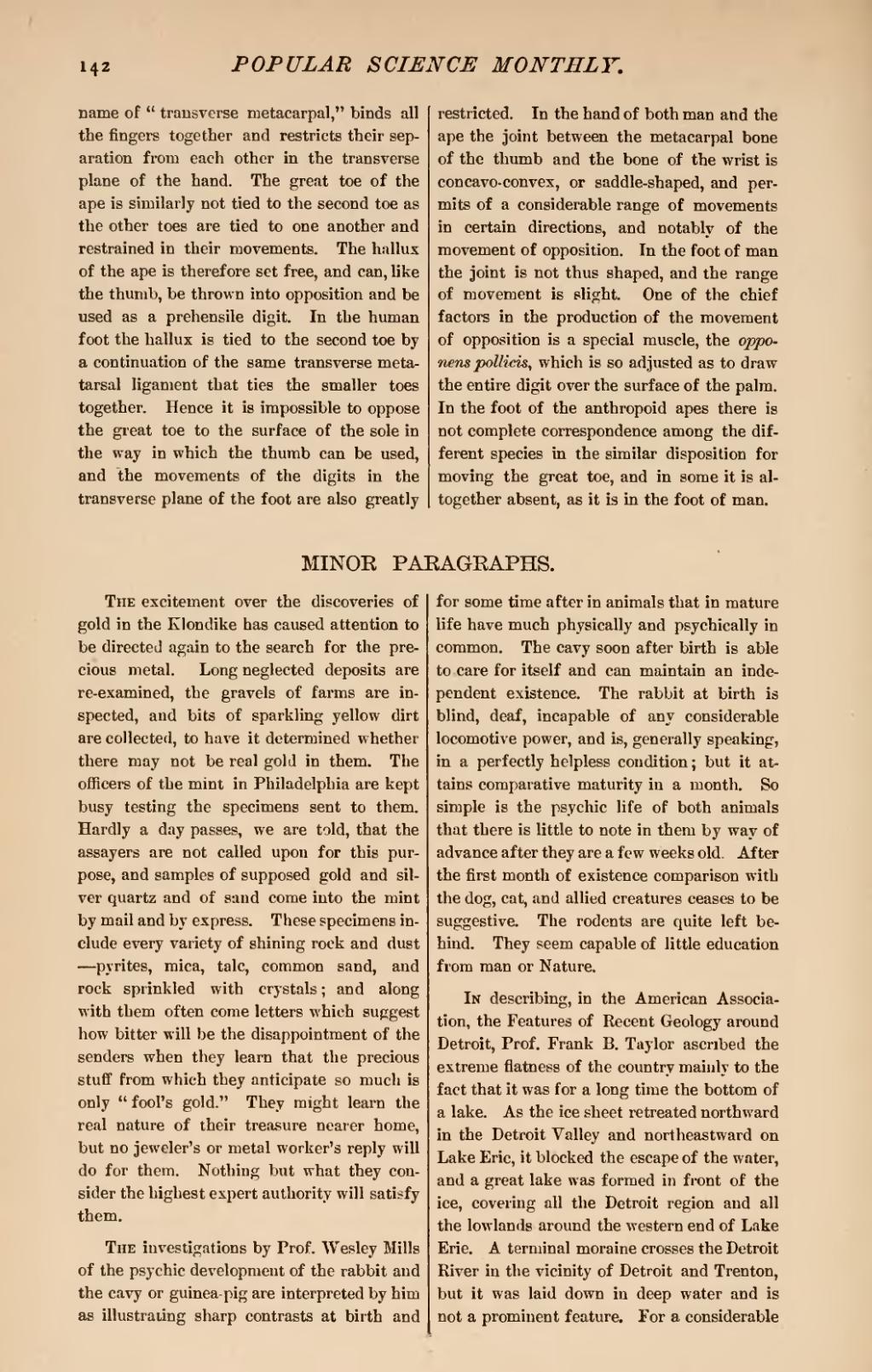name of "transverse metacarpal," binds all the fingers together and restricts their separation from each other in the transverse plane of the hand. The great toe of the ape is similarly not tied to the second toe as the other toes are tied to one another and restrained in their movements. The hallux of the ape is therefore set free, and can, like the thumb, be thrown into opposition and be used as a prehensile digit. In the human foot the hallux is tied to the second toe by a continuation of the same transverse metatarsal ligament that ties the smaller toes together. Hence it is impossible to oppose the great toe to the surface of the sole in the way in which the thumb can be used, and the movements of the digits in the transverse plane of the foot are also greatly restricted. In the hand of both man and the ape the joint between the metacarpal bone of the thumb and the bone of the wrist is concavo-convex, or saddle-shaped, and permits of a considerable range of movements in certain directions, and notably of the movement of opposition. In the foot of man the joint is not thus shaped, and the range of movement is slight. One of the chief factors in the production of the movement of opposition is a special muscle, the opponents pollicis, which is so adjusted as to draw the entire digit over the surface of the palm. In the foot of the anthropoid apes there is not complete correspondence among the different species in the similar disposition for moving the great toe, and in some it is altogether absent, as it is in the foot of man.
The excitement over the discoveries of gold in the Klondike has caused attention to be directed again to the search for the precious metal. Long neglected deposits are re-examined, the gravels of farms are inspected, and bits of sparkling yellow dirt are collected, to have it determined whether there may not be real gold in them. The officers of the mint in Philadelphia are kept busy testing the specimens sent to them. Hardly a day passes, we are told, that the assayers are not called upon for this purpose, and samples of supposed gold and silver quartz and of sand come into the mint by mail and by express. These specimens include every variety of shining rock and dust—pyrites, mica, talc, common sand, and rock sprinkled with crystals; and along with them often come letters which suggest how bitter will be the disappointment of the senders when they learn that the precious stuff from which they anticipate so much is only "fool's gold." They might learn the real nature of their treasure nearer home, but no jeweler's or metal worker's reply will do for them. Nothing but what they consider the highest expert authority will satisfy them.
The investigations by Prof. Wesley Mills of the psychic development of the rabbit and the cavy or guinea-pig are interpreted by him as illustrating sharp contrasts at birth and for some time after in animals that in mature life have much physically and psychically in common. The cavy soon after birth is able to care for itself and can maintain an independent existence. The rabbit at birth is blind, deaf, incapable of any considerable locomotive power, and is, generally speaking, in a perfectly helpless condition; but it attains comparative maturity in a month. So simple is the psychic life of both animals that there is little to note in them by way of advance after they are a few weeks old. After the first month of existence comparison with the dog, cat, and allied creatures ceases to be suggestive. The rodents are quite left behind. They seem capable of little education from man or Nature.
In describing, in the American Association, the Features of Recent Geology around Detroit, Prof. Frank B. Taylor ascribed the extreme flatness of the country mainly to the fact that it was for a long time the bottom of a lake. As the ice sheet retreated northward in the Detroit Valley and northeastward on Lake Erie, it blocked the escape of the water, and a great lake was formed in front of the ice, covering all the Detroit region and all the lowlands around the western end of Lake Erie. A terminal moraine crosses the Detroit River in the vicinity of Detroit and Trenton, but it was laid down in deep water and is not a prominent feature. For a considerable
